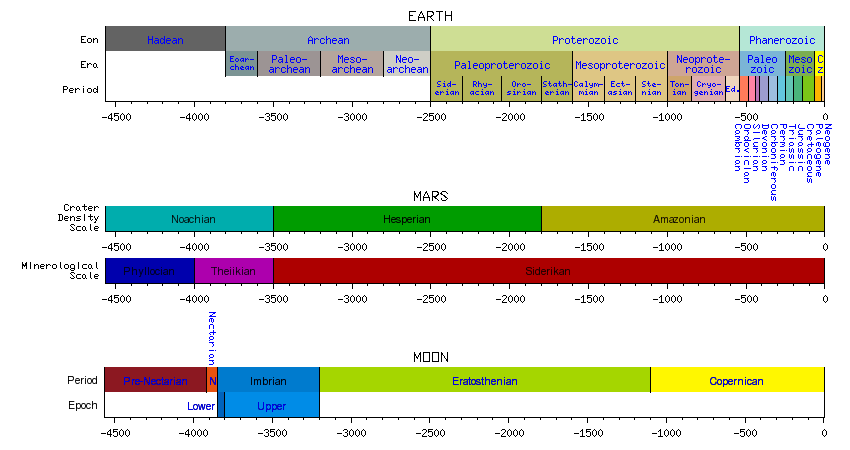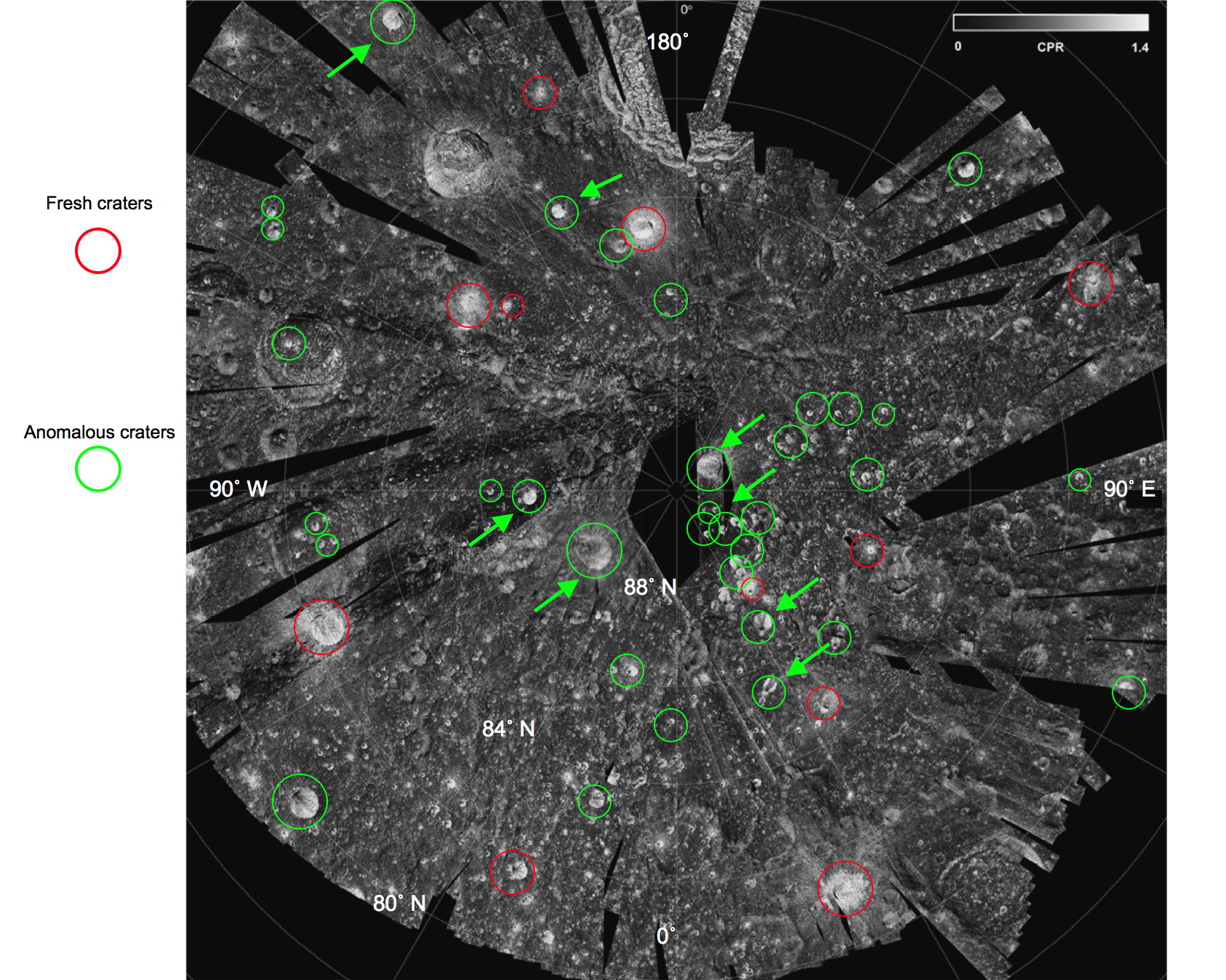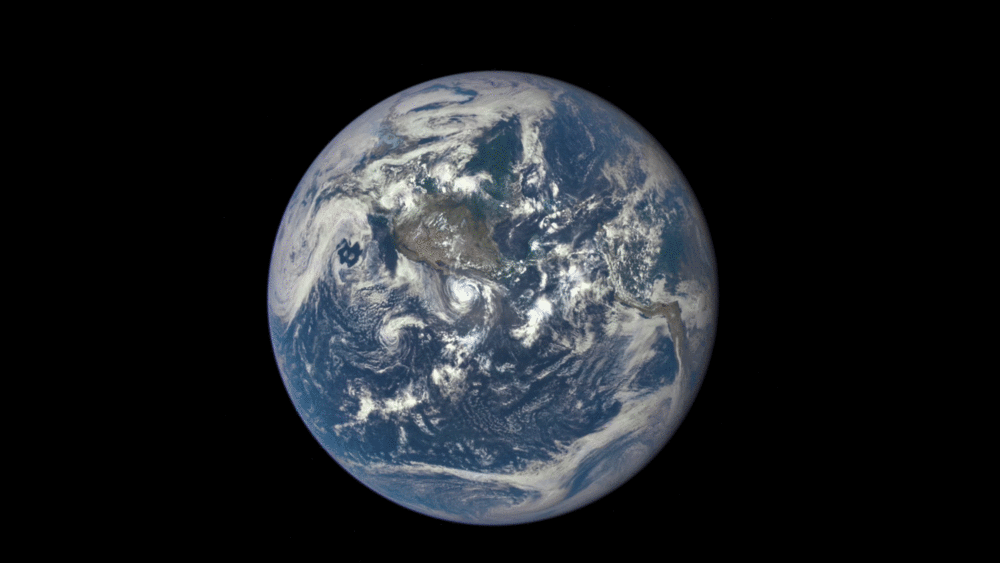Planet captured by the Earth. Past, present and future of the moon

The Slavic name of our natural satellite, the Moon, has the same Proto-Indo-European roots as the Latin Luna. "Louksna", the "bright" queen of the night, from ancient times had a strong influence on human consciousness. The phases of the natural satellite of our planet became the basis of the calendar of earthlings , and the Moon itself was the main object of human study of the space environment at the beginning of the space age. Two dozen expeditions to the lunar surface, 6 of which were manned, greatly enriched our knowledge about this slave of the Earth. Under the cat a relatively brief summary of our knowledge of the moon, accumulated over the past half century.
Entertaining Selenology
The moon is 81 times smaller than the Earth in mass, and its diameter is almost 4 times smaller and equals 3476 km. The mass and size of the moon is enough for the planet-like differentiation of its structure. Like Earth, it is supposed to have a solid internal core of iron and nickel with a diameter of 500 km, surrounded by a 100 km layer of liquid iron. The liquid outer core and mantle are delimited by a semi-molten rock layer about 100 km thick. The relative size of the Moon’s core is half the size of the Earth’s cores (20% vs. 50%). Such a “deficit” of iron in the structure of the moon is explained by the generally accepted hypothesis of the formation of the moon - from the iron-poor outer layers of the colliding Tei and Earth protoplanets about 4.5 billion years ago.
')

Of course, from the applied point of view, the outer shell of the Moon is most interesting - its bark is 70 km thick (on average). The crust is thickest on the invisible side of the Moon (up to 100 km), thinner on the visible (the crust is absent over many lunar seas). The surface area of the moon is slightly larger than the total area of Africa and Australia and is dotted with impact craters of all sizes. Only craters with a diameter of more than 10 km account for up to 15,000! The above-mentioned “seas” occupy 16% of the Moon’s surface, and are concentrated mainly on the side of the satellite visible from Earth. Such a “selective” orientation of the lunar seas towards the Earth is not accidental and is indirectly related to the different thickness of the lunar crust in both hemispheres. Asteroids more easily pierced the thin crust on the visible side of the moon, causing large-scale outpouring of magma, and the tidal forces of the earth sought to "turn" the least heavy hemisphere of their satellite to itself.
Topographic map of the heights of the moon's surface, compiled by the clementine probe

From the point of view of selenology, the Moon looks much more variegated and diverse than the dichrome world in the eyes of an inexperienced observer. The surface of the moon was formed within 4.5 billion years, through the alternation of 5 different geological periods (by color). Some of the most ancient structures are marked in brown and dark blue, later in red and the youngest in yellow, these are impact craters of the Copernican era (named after the crater Copernicus), about a billion years old.

Comparative map of the geological periods of the Earth, Mars and the Moon. The colors of the periods of the moon are not related to the colors of the card above. A detailed map of geological formations on the visible side of the moon is available with a table of their occurrence by geological periods.

It is not known exactly what caused such “asymmetry” of the density of matter in the two hemispheres of the Moon, one of the hypotheses suggests the ancient collision of two large Earth satellites “not dividing” one and the same orbit.
This fact has important practical consequences for the potential development of the “planet” nearest us. As stated above, the strikes of asteroids caused an outpouring of the mantle rich in heavy metals onto the surface of the Moon, which formed the "seas", a significant shortage of these elements is already observed in the lunar crust.
The chemical composition of lunar rocks varies between "seas" and continents. Oxygen, silicon, aluminum and magnesium are typical constituent elements of silicate rocks, of which the crust of the terrestrial planets is mainly (similar to the moon and their% composition)

In the lunar "seas" there is more titanium and iron, whereas in the mainland there is more aluminum. Titanium is represented mainly in the composition of the mineral ilmenite - a mixture of iron oxide (wustite) and titanium oxide. Map of the distribution of iron oxides on the surface of the moon

In addition to the "fuel" of the future for hypothetical thermonuclear reactors - helium 3, they also found a resource much more necessary for man on the moon. So in a few dozen craters of the North Pole of the Moon, inaccessible to direct sunlight, about 600 million m3 of water ice were found. Even this is quite enough for the needs of the settlement of several thousand people (subject to rational use, a closed cycle of consumption and cleaning).
In the polar craters marked with a green circle, radio waves are best reflected by the ground "forever" hidden from the sun's rays. This directly indicates the presence of water ice in the ground, in contrast to the relatively young craters highlighted by the red circle, the reflectivity (albedo) of which radio waves does not depend on the illumination by the rays of the Sun.

Five heavyweights
Of all 173 known satellites of the planets in the solar system, the Moon reliably enters the top five of the largest and most massive moons. The satellite of Saturn, Titan and the satellite of Jupiter, Ganymede, are intermediate in size between the Moon and Mars, being twice as heavy as the Moon. The diameter of Jupiter’s second largest moon, Callisto, is only 200 km lower than Titan, but 1200 km more than the geological active satellite in the solar system, Io. Io is very close in size, density and mass to our natural satellite. Only of the five satellites of giants, the Moon is inferior to it in terms of average density (by 5%) and gravity (by 10%) on its surface. Gravity on Ganymede and Titan is 15% lower than on the Moon. Despite the double superiority in mass, the second cosmic velocity of both celestial bodies is only 12% (average value) higher than the lunar one.
The lower limit of the size of the planets of the solar system and the upper limit of the size of their satellites do not have a clearly defined border. What can be said about the mass of celestial bodies. Mercury, though inferior in size to Ganymede, is still twice as heavy as his

Due to the small difference in gravity and the second cosmic between Titan and the Moon, the question arises of the potential ability of the Moon to maintain a dense atmosphere, like Titan. The mystery of the atmosphere of Titan is not completely resolved, but this “anomaly” is undoubtedly connected with the great distance of Titan from the sun, as a result of which the velocity of gas molecules in the atmosphere of this moon rarely reaches the level at which the process of active dissipation (blowing off) of gases begins. The solar radiation received by the Moon is enough to blow away the atmosphere as massive as that of Titan for several tens of thousands of years. However, this may be more than enough to terraforming the moon, since the atmosphere of nitrogen and oxygen can be held stably for several thousand years, and over 10,000 years the atmospheric pressure will fall only twice (which is not critical for human life).
Hypothetical map of the terraformed moon. The lowlands of the lunar seas are flooded with oceans, and the craters are turned into lakes and ponds. It is obvious that the hypothetical hydrosphere of the Moon is unnecessarily exaggerated, because it makes huge areas of the lunar plains unfit for habitation.

Earth Lighthouse
The moon is the closest natural satellite of the planet to the Sun, and thanks to its enormous size, it holds the palm as the brightest "night light" in our star system. With a full moon, the magnitude of our satellite can reach -12.7m, yielding only the brightness of the sun. This is more than three times the total brightness of all the gallium satellites of Jupiter, visible from the upper atmosphere of the giant.
The moon and the Earth taken from the satellite at the Lagrange point L 1 of the Earth-Sun system. The different albedo (reflectivity) of both bodies is striking. An equal area of the Earth reflects almost twice as much light as a similar area on the Moon.

Although Io is dimmer than the Moon by 4 times, however, the apparent size of his disk (from Jupiter) is one-fourth the lunar one (according to the last parameter, the Moon (30 cor. Min.) Is once again only inferior to it). “Neptune’s satellite Triton breathes in the back of the head to the Moon, capable of reaching an angular size of 28 minutes in the sky of its planet (the minimum for the moon is 29m).
Due to its size and proximity to the Sun, the Moon is also the only satellite of the planet in the solar system, clearly visible to the naked eye from the surface of other planets. Observation of the Moon from Mars can be complicated by the brightness of the Earth (it is close to the brightness of Jupiter and 25 times brighter than the Moon, at a maximum of only 1/3 the size of the lunar disk visible from Earth). But the Moon and the Earth are perfectly visible as two separate celestial bodies already from the orbit of Venus. During the confrontations, the Moon and the Earth shine respectively as Jupiter and Venus in the sky of the Earth, being distant from each other at an angular distance of 27m!
The ecumenical "waltz" of Jupiter with her beautiful daughter Venus in the sky of the Earth (summer 2015) gave a fairly accurate idea of the appearance of the Earth and the Moon in the sky of Venus during the period of confrontation. In the photo on the right, the Earth and the Moon taken from Mercury by the interplanetary probe. Messenger

In "full-fledged", the "visible" lunar surface is illuminated 50 times brighter than the Earth at full moon, thanks to three times the Earth's albedo relative to the Moon. So on most of the side of the Moon visible from Earth, it is rarely darker than the full moon on Earth, and on other nights you can read documentation without artificial lighting.
The night side of the moon is almost invisible to the naked eye due to the brightness of the earth's atmosphere. However, with the necessary exposure of photographic equipment, a view of the lunar surface illuminated by the blue light of the Earth opens up.

Artistic representation of the solar eclipse on the moon. On the right is a real shot of a solar eclipse from the moon's orbit. One can clearly see the ring of the earth's atmosphere, breaking the sun's rays, “cut off” from below by the lunar horizon. Fragment of the video probe Kaguya

Summing up, we can say that the Moon is not quite a dead and “useless” world, which mankind called it after the lunar race. It is quite possible that our satellite has great prospects as a springboard for man-made expansion into space due to its weak gravity and large reserves of light and heavy metals on its surface. In the meantime, we can only hope that someday the Earth, illuminating the way to its children in the inhospitable and hostile to all living moon deserts, will already be at the place of the night star.
Simulation of the exploration of the moon in the game Anno 2205
Apollo Program
Gallery of panoramas of missions Lunokhod 1 and Lunokhod 2
5 facts about planet Earth
Earth rise on the moon is common
Chronicle of space super heavyweight. Part 1. Moon "dinosaurs"
Source: https://habr.com/ru/post/371621/
All Articles